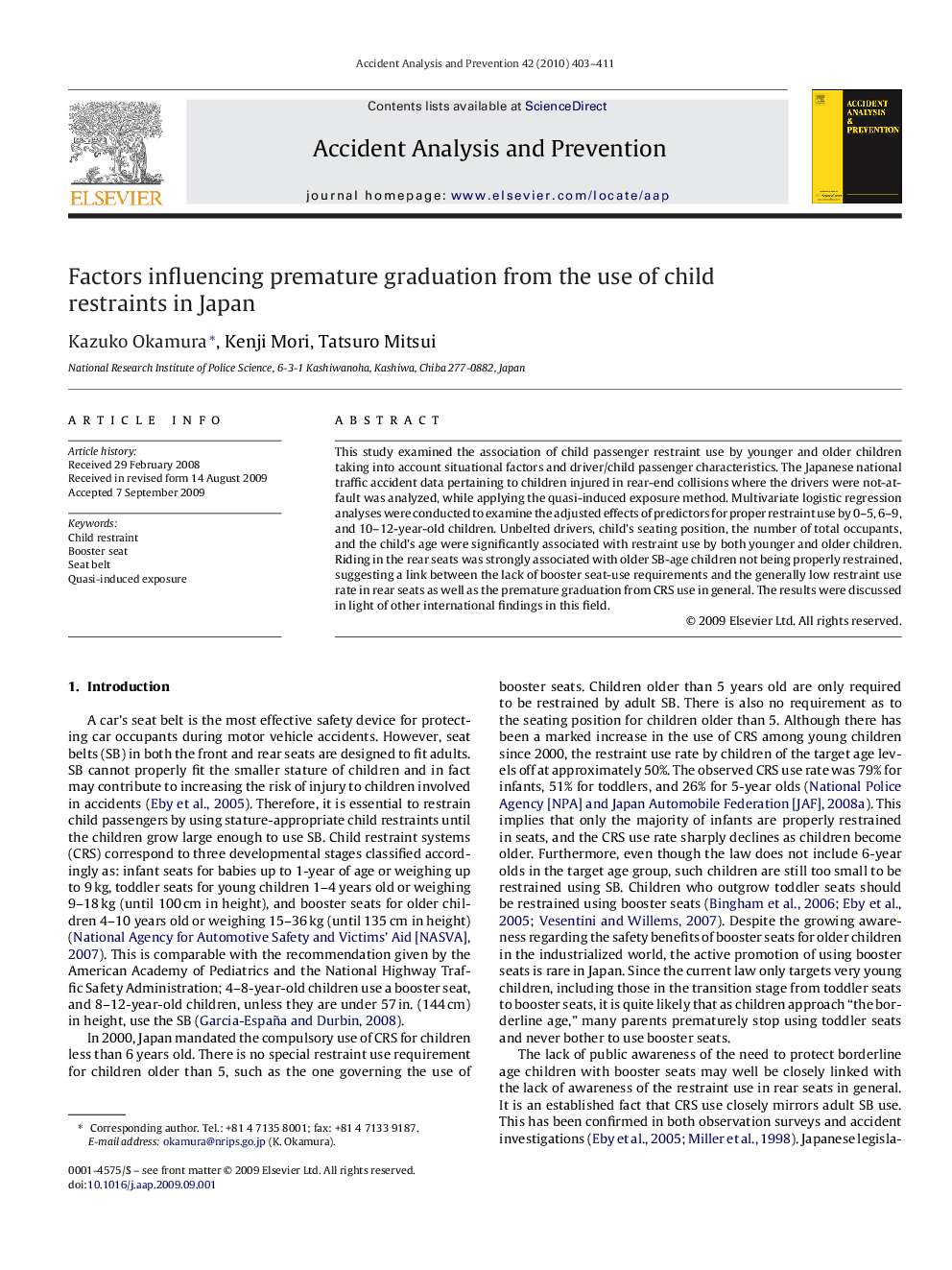| Article ID | Journal | Published Year | Pages | File Type |
|---|---|---|---|---|
| 572935 | Accident Analysis & Prevention | 2010 | 9 Pages |
This study examined the association of child passenger restraint use by younger and older children taking into account situational factors and driver/child passenger characteristics. The Japanese national traffic accident data pertaining to children injured in rear-end collisions where the drivers were not-at-fault was analyzed, while applying the quasi-induced exposure method. Multivariate logistic regression analyses were conducted to examine the adjusted effects of predictors for proper restraint use by 0–5, 6–9, and 10–12-year-old children. Unbelted drivers, child's seating position, the number of total occupants, and the child's age were significantly associated with restraint use by both younger and older children. Riding in the rear seats was strongly associated with older SB-age children not being properly restrained, suggesting a link between the lack of booster seat-use requirements and the generally low restraint use rate in rear seats as well as the premature graduation from CRS use in general. The results were discussed in light of other international findings in this field.
